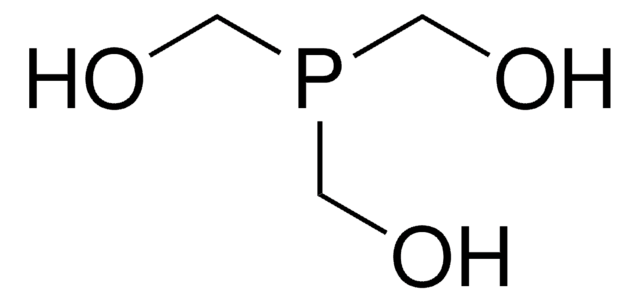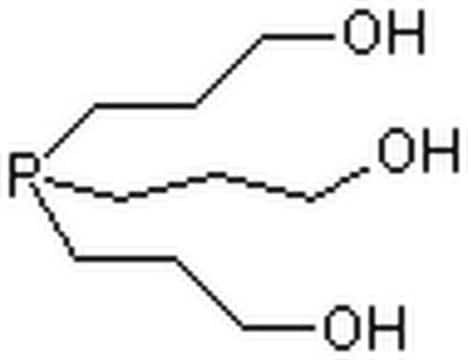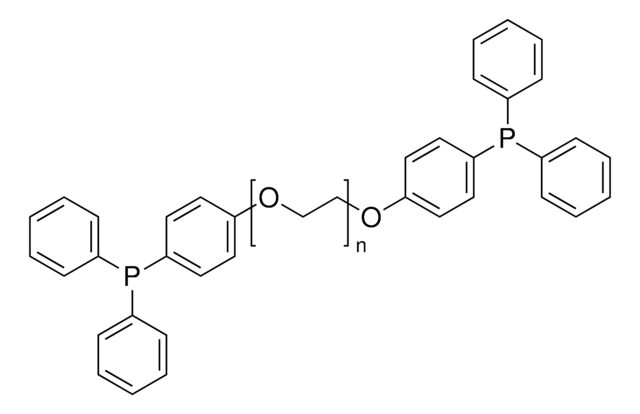777854
Tris(hydroxypropyl)phosphine
≥80%
Sinonimo/i:
THPP
About This Item
Prodotti consigliati
Saggio
≥80%
Forma fisica
liquid
Impiego in reazioni chimiche
reagent type: reductant
Densità
1.136 g/mL at 25 °C
Stringa SMILE
OCCCP(CCCO)CCCO
InChI
1S/C9H21O3P/c10-4-1-7-13(8-2-5-11)9-3-6-12/h10-12H,1-9H2
YICAEXQYKBMDNH-UHFFFAOYSA-N
Categorie correlate
Descrizione generale
Applicazioni
- As a reducing agent in the reduction of dehydroascorbic acid to ascorbic acid
- In the cleavage of disulfide bonds in small molecules
- As a catalyst in the conversion of polysulfides
Avvertenze
Danger
Indicazioni di pericolo
Classi di pericolo
Skin Corr. 1B
Codice della classe di stoccaggio
8A - Combustible corrosive hazardous materials
Classe di pericolosità dell'acqua (WGK)
WGK 3
Punto d’infiammabilità (°F)
Not applicable
Punto d’infiammabilità (°C)
Not applicable
Certificati d'analisi (COA)
Cerca il Certificati d'analisi (COA) digitando il numero di lotto/batch corrispondente. I numeri di lotto o di batch sono stampati sull'etichetta dei prodotti dopo la parola ‘Lotto’ o ‘Batch’.
Possiedi già questo prodotto?
I documenti relativi ai prodotti acquistati recentemente sono disponibili nell’Archivio dei documenti.
I clienti hanno visto anche
Il team dei nostri ricercatori vanta grande esperienza in tutte le aree della ricerca quali Life Science, scienza dei materiali, sintesi chimica, cromatografia, discipline analitiche, ecc..
Contatta l'Assistenza Tecnica.




![1,3,5-Triaza-7-phosphatricyclo[3.3.1.13,7]decane 97%](/deepweb/assets/sigmaaldrich/product/structures/101/883/9fb92027-f8be-41b8-abd5-232e7cac2696/640/9fb92027-f8be-41b8-abd5-232e7cac2696.png)









